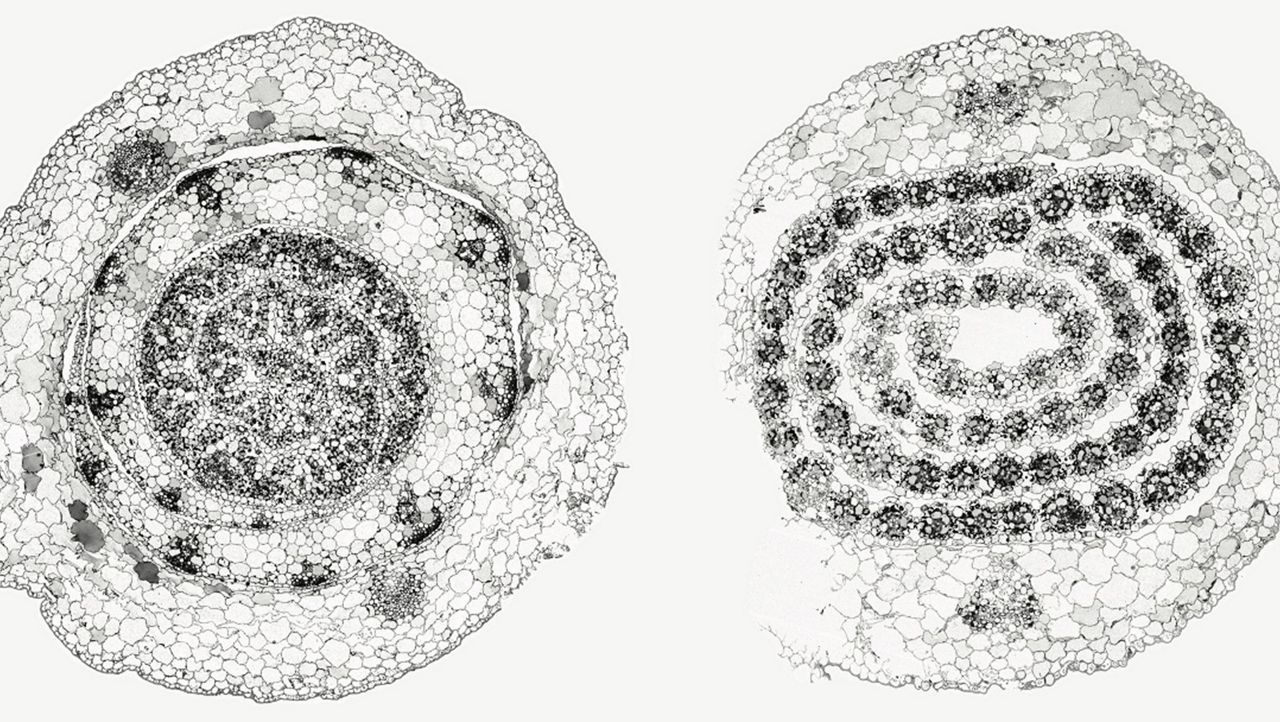SAN DIEGO — A group of scientists from around the world are trying to flip the switch on photosynthesis, harnessing the power of plants to create a better future.
The power of nature is something Adam McCurdy feels every time he puts his hands in the soil. He’s a farmer at Coastal Roots, a nonprofit community farm. Over the last year, they have given away over 90% of their food to help nourish the community.
As an organic and regenerative farmer, McCurdy knows how important it is to grow healthy food to feed a growing population.
“We don’t need more chemicals. We don’t need to really take away from the miracle of nature,” he said. “What we need to do is we need to go back, with the science.”

Salk scientists like Joe Ecker and Joseph Swift agree. They are investigating the differences between plants like sorghum, who use a more efficient form of photosynthesis — called C4 — and other plants like rice, who use a less-efficient form of photosynthesis called C3.
“We want to engineer the properties of the C4 plant into C3 to make it more efficient. It’s particularly efficient at high temperature, and as you know the temperature has been increasing and so having more resilient plants is going to be an important outcome,” Ecker said.
For the first time, Salk scientists and collaborators at the University of Cambridge discovered a key step C4 plants took to evolve into such efficient photosynthesizers.
“It really is understanding evolution,” Ecker said. “Comparing C3 and C4 plants and then trying to understand, is it new genes? No, it’s probably not new genes; it’s new re-wiring of these genes.”
“We know that the world is going to change in the next 80-100 years and we need to make sure that agriculture is ready for that moment,” Swift said.
Both Ecker and Swift hope is to use this information to switch on C4 photosynthesis to make crops like rice, wheat and soybeans more resilient to climate change.
“Using practices where we’re not introducing new genes, but just changing the way that existing genes are being turned on and off in the plant is the best way to go,” Swift said. “And that’s what our discovery is going to help usher in.”
McCurdy is proud to be working alongside researchers who are also trying to feed the people of the world.
“We’re working with scientists and we’re working with other farms and farmers in our region, throughout the nation and actually throughout the world to look at the way we can evolve our systems,” McCurdy said. “We can learn from one another and get the nutrient density back into our food and create food sovereignty; to be looking forward is to be farming.”
According to the USDA, rice is the primary staple food for more than half the world’s population. According to Salk, plants who use C4 photosynthesis have a 50% increase in efficiency compared to C3 plants.



